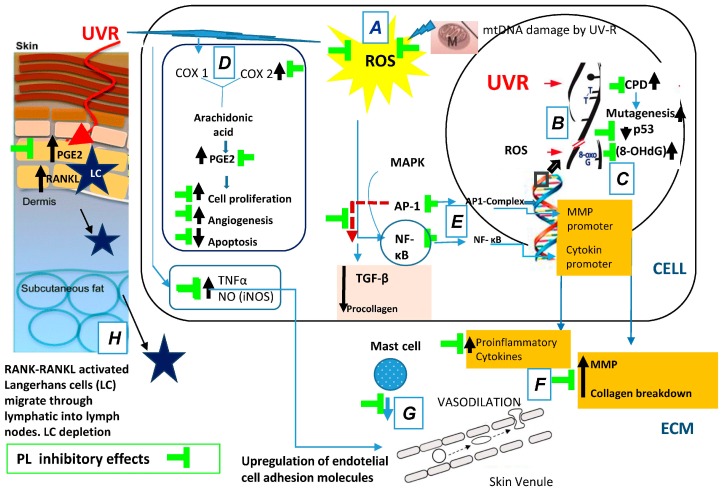Figure 1.
Polypodium leucotomos (PL) extract’s anti-UV effects: (A) decreases pro-inflammatory mechanisms of UV radiation include ROS-induced lipid peroxidation; (B) decreases UV-induced DNA damage; (C) increases the expression of active p53; (D) inhibits UV-induced Cox-2 enzyme levels; (E) reduces UV-induced nuclear transcription factors AP-1 and NF-κB; (F) reduces MMPs production; (G) decreases inflammation and vasodilation; and (H) inhibits skin immunodepression. Black arrows indicate increased/decreased effects due to UVR. ROS, reactive oxygen species; mtDNA, mitochondrial DNA; UV, ultraviolet; ECM, extracellular matrix; CPD, cyclobutane pyrimidine dimers; MMP, matrix metalloproteinase; MAPK, mitogen-activated protein kinases; AP-1, activator protein-1; NF-κB, nuclear factor kappa beta; TGF-β, transforming growth factor-β.; COX, cyclooxygenase enzymes; PGE2, prostaglandin E2; TNF-α, tumor necrosis factor-α; iNOS, isoforms of nitric oxide synthase; RANK, receptor activator of nuclear factor kappa-B; RANKL, receptor activator of nuclear factor kappa-B ligand.

